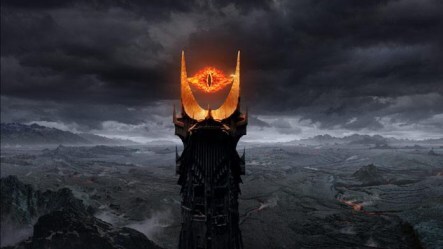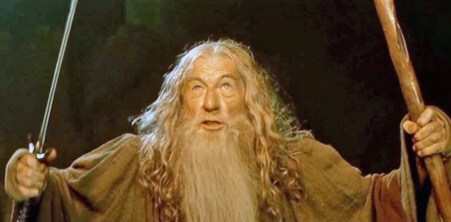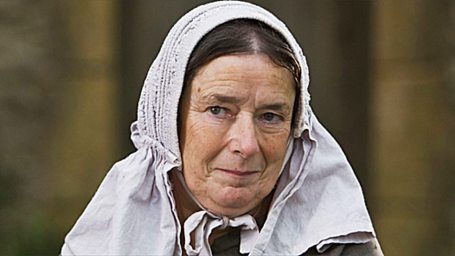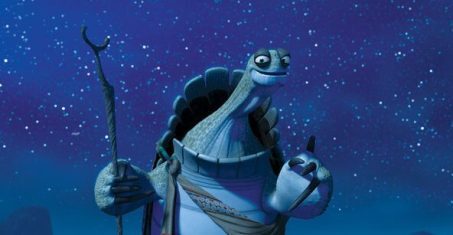Archetypal Antagonists for the Mage Arc: Evil and the Weakness of Humankind
 It is appropriate that the final archetypal character arc of the life cycle—the Mage Arc—should be the one to finally confront the ultimate antagonist within the human experience. This is, of course, Evil—in all its abstraction.
It is appropriate that the final archetypal character arc of the life cycle—the Mage Arc—should be the one to finally confront the ultimate antagonist within the human experience. This is, of course, Evil—in all its abstraction.
As the final arc, the Mage symbolizes the end of life and, presumably, its fulfillment. Because the Mage is such a powerful—and rare—personage, the mysteries of his arc are ones few writers ever personally embody, but still ones we instinctively speculate about. It is in the speculating that we sometimes are fortunate enough to offer to ourselves and perhaps to our readers a glimpse into greater truths and possibilities.
By its very numinosity and mysteriousness, the Mage Arc offers the opportunity for its archetypal antagonists to be personified in many different ways. As we’ve noted throughout this supplementary series, the archetypal antagonists faced within the successive life arcs grow increasingly less dualistic and more abstract as we go. In the First Act of life, the Maidens and the Heroes necessarily define “evil” as “the other” whom they are resisting and from whom they need to individuate. Indeed, they are therefore inclined to then insist that the very nature of “otherness” must indicate evil.
By the time the Crone makes peace with Death, it rather seems there is no concept of Evil left to confront. But the wisdom of the Mage sees a bigger picture that could only be instinctively and incompletely grasped in the earlier arcs. Perhaps most surprisingly, what the Mage recognizes is less Evil as a vast and primal entity, but rather as something comparatively “small”—the evil that is the destruction and unhealth in the hearts of humankind.
And so the antagonist the Mage faces, whether portrayed in metaphor or not, is ultimately one he himself cannot defeat. Indeed, the larger part of his arc is centered around the struggle of realizing that to exert his great power in taking control of the situation—and therefore robbing autonomy and choice from the younger denizens of the Kingdom—would be perhaps the greatest evil of all.
The Mage’s Archetypal Antagonists: Practical and ThematicMore than any of the preceding archetypal character arcs, that of the Mage can be seen as a “passing of the torch.” As the final life arc, the Mage’s story ends, whether literally or symbolically, with the Mage’s departure from this world. In future, he won’t be around, in any guise, to give the younger arcs a helping hand. From now on, they’re going to be on their own.
And so the great need represented by the Mage Arc is that of his somehow making sure the Kingdom will be okay in his absence—that the cycle of life will roll on, hopefully in health and goodness. His great challenge—his final challenge—is that of resisting the temptation to control this outcome, knowing that to do so would be to intrinsically destroy that natural cycle anyway: he would, in those poignant words, “meet his destiny on the road he took to avoid it.”
Evil as Archetypal AntagonistIs there any antagonistic force so archetypal as that of Evil? However much symbolic nuance resides within archetypes, they are, by their very nature, simplistic. They are black and white, without shades of gray or even moral complexity per se (unless, of course, the archetype represents moral complexity, as in, say, the Trickster). And Evil, of course, always seems very black indeed.
By its very starkness, the concept of Evil can sometimes be difficult to write about. These days, our post-modern minds may argue with one another about what constitutes Evil or even if it really exists. And yet conceptually it continues to show up in our fictional dreamscapes, over and over again, with varying degrees of resonance and applicability.
Although Evil can be and often is personified through the undeniably destructive and imbalanced actions of certain individuals, we see it portrayed most explicitly in fiction as nameless, faceless monstrosities. For example, the horror genre (although not often featuring Mage Arcs) is designed around representing faceless Evil in various guises. Serial killers are often masked, and monsters are often mindless and soulless. There is no explanation for Evil’s actions; it is beyond reason or even motive sometimes.
Within the younger archetypal arcs, antagonists may often be seen as Evil (and indeed may truly be so), but they are still usually personified in some way. These arcs are more concerned with simple conflicts that offer clear winners and losers. Whatever the antagonistic manifestation, it will be defeated in the form of the protagonist’s current “Lie.” The end. All is well. The Kingdom can exist happily ever after.
But the very nature of the life-arc cycle indicates that this happily ever after is only true until a new antagonistic force interrupts the character’s life in the form of a new “Lie” he or she must overcome.
Theoretically within this model of archetypal arcs, the Mage represents the finality of this cycle. Naturally, this is not literally true, both because this cycle is but one possible archetypal exploration of life and also because infinite concepts such as archetypes can have no truly finite ends (no matter how much fiction would like to make it so). Nevertheless, within this model, the Mage represents the “fulfillment” of the cycle and therefore an ultimate showdown with the single great Antagonist who has, in fact, been represented in all of the limited mindsets overcome throughout previous arcs.
The Evil the Mage faces may, of course, be represented as a great force that threatens the Kingdom—such as we find in so many fantasies and most notably with the Great Eye of Sauron in The Lord of the Rings.

Even if this force employs a mortal army (as with Sauron’s legions of orcs), the force itself represent an infinitude of some kind. More specifically, in its effects, it is usually recognized by the fact that it would eliminate free choice. In fantasy it may literally do this by mind-slaving people, or more practically it may either exert a powerful tyranny and/or kill people—thereby robbing them of any choice at all.
Therefore, we can see how Evil need not always be presented on a grand scale. If your Mage character is Gandalf, he will of course require a grand theater of metaphor in which to operate.

But if your character is to appear in realistic fiction, then the Evil he faces can be as realistically “small” as simply the potential corruption infecting the heart of one single being—such as Will Smith’s Bagger Vance faces in the heart of Matt Damon’s character.

“Evil” is a very big word—and a very big antagonist. But in many Mage stories, this Evil manifests in the smallest of ways—not even in an obviously “evil” person, but simply in an ordinary person’s weakness (or what Mage character Queenie in Larkrise to Candleford calls “human frailty”).

This weakness is most poignantly obvious not in the hearts of the Mage’s “enemies,” but in the hearts of those very youngsters he loves and would mentor—the Maidens, Heroes, Queens, Kings, and even Crones whom he is about to leave behind. The Mage’s great challenge is not to use his accumulated life’s power to destroy the Evil, but rather to gather his wisdom to avoid the temptation of turning himself into that very Evil by taking away control—and free will—from these younger, weaker characters.
In a triumphant Mage Arc, his very example and his great wisdom will be enough to inspire positive and necessary change in his wards. It is not the Mage who defeats the Evil in the end, but those in the Kingdom who have overcome the weakness in their own hearts. To the degree the Mage tries to protect the younger characters from facing the full conflict, or to the degree he attempts to control or manipulate their choices, he becomes Evil. And because he is a supremely advanced and powerful archetype, this fatal weakness in his own human heart will prove more dangerous than whatever Evil he resisted in the beginning.
How Evil and the Weakness of Humankind Operate in the Conflict and the Climactic MomentDepending on how you choose to represent Evil as an antagonist within your story, you may emphasize it either as a huge and overwhelming “force” or as a much smaller conflict within a single relationship. There is the opportunity within the Mage Arc to either go really big and epic or really microscopic and intimate.
In a story that emphasizes Evil as a supernatural force, this force will usually motivate the external conflict. It may even create a great war in which forces of Good and Evil oppose each other. But even within the forces of “Good,” the Evil will creep in on a more personal and interrelational level, as the Mage witnesses the weakness and temptation encountered by younger characters.
By contrast, a story that starts out emphasizing this potential for weakness within younger characters (and indeed the Mage himself) will usually focus more intimately on the consequences of the human characters’ choices and actions. To the degree the Mage’s influence fails—or to the degree the Mage himself manipulates outcome—Evil will result in ways both large and small, creating plot obstacles and conflict.
For the Mage protagonist, the Climactic encounter is less about defeating an enemy and more about surrendering to the end of life. Whether literally or metaphorically, he steps out of this mortal theater, leaving the younger archetypes to fight the battles they are meant to fight as they continue to progress through their own life cycles.
Although not a protagonist, Master Oogway in the animated film Kung-Fu Panda offers a beautiful example of a character who fulfills all the best qualities of a true and positive Mage. With utter love but absolutely no attempt at control, he recognizes when it is time to leave the challenges of this life to those whom he has trained up behind him.

In many ways, the Evil represented by antagonistic forces in a Mage Arc is simply “the Lie the Characters Believe.” If the younger characters are able to manifest their own Positive-Change Arcs and overcome their individual Lies from whatever stage of their journeys, the Evil will be both defeated and transmuted. In exemplifying this, the Mage may not directly determine the end of the story’s conflict, but he will at least initiate his beloved others to do so.
***
And so we come to the end of our exploration of archetypal antagonists in association with the life-arc cycle. Naturally, the twelve archetypal antagonists presented here are but a tiny fraction of possible archetypes to choose from in portraying your antagonist characters. However, these archetypal forces—whether depicted literally or abstractly—are the ones that create the practical and thematic conflicts for each of the archetypal character arcs. Even if you choose to use other archetypal antagonists in your stories, understanding how these forces integrally interact with life progressions can be helpful in crafting deeply resonant and cohesive fiction.
Related Posts:
Story Theory and the Quest for MeaningAn Introduction to Archetypal StoriesArchetypal Character Arcs: A New SeriesThe Maiden ArcThe Hero ArcThe Queen ArcThe King ArcThe Crone ArcThe Mage ArcIntroduction to the 12 Negative ArchetypesThe Maiden’s Shadow ArchetypesThe Hero’s Shadow ArchetypesThe Queen’s Shadow ArchetypesThe King’s Shadow ArchetypesThe Crone’s Shadow ArchetypesThe Mage’s Shadow ArchetypesIntroduction the 6 Flat ArchetypesThe ChildThe LoverThe ParentThe RulerThe ElderThe MentorHow to Use Archetypal Character Arcs in Your StoriesSummary of the Archetypal Character ArcsArchetypal Antagonists for Each of the Six Archetypal Character ArcsMaiden Arc: Authority and PredatorHero Arc: Dragon and Sick KingQueen Arc: Invader and Empty ThroneKing Arc: Cataclysm and RebelCrone Arc: Death Blight and TempterWordplayers, tell your opinions! Can you think of any further examples of Evil and the Weakness of Humankind as archetypal antagonists in Mage-Arc stories? Tell me in the comments!Click the “Play” button to Listen to Audio Version (or subscribe to the Helping Writers Become Authors podcast in Apple Podcast or Amazon Music).
___
Love Helping Writers Become Authors? You can now become a patron. (Huge thanks to those of you who are already part of my Patreon family!)The post Archetypal Antagonists for the Mage Arc: Evil and the Weakness of Humankind appeared first on Helping Writers Become Authors.




